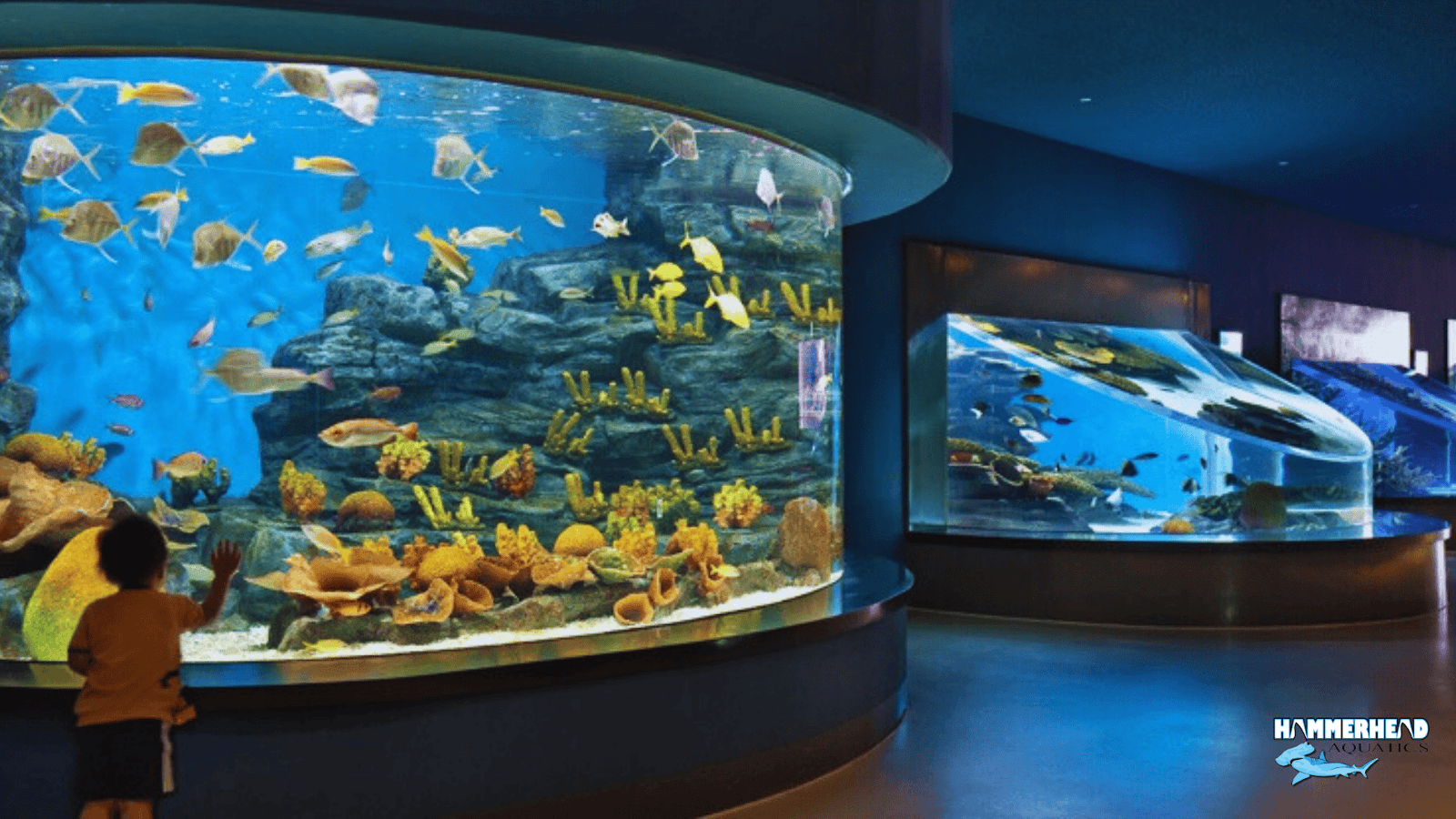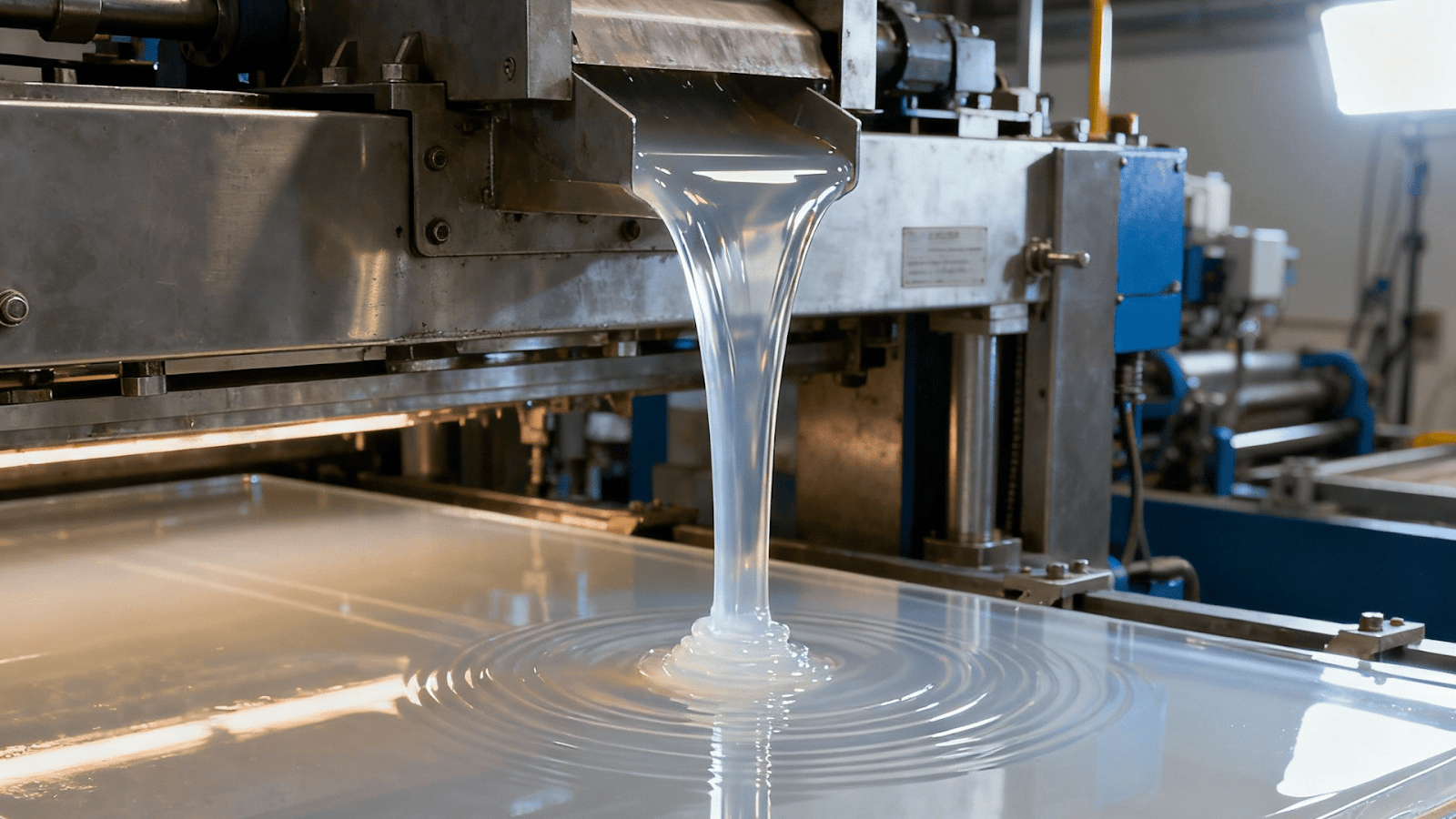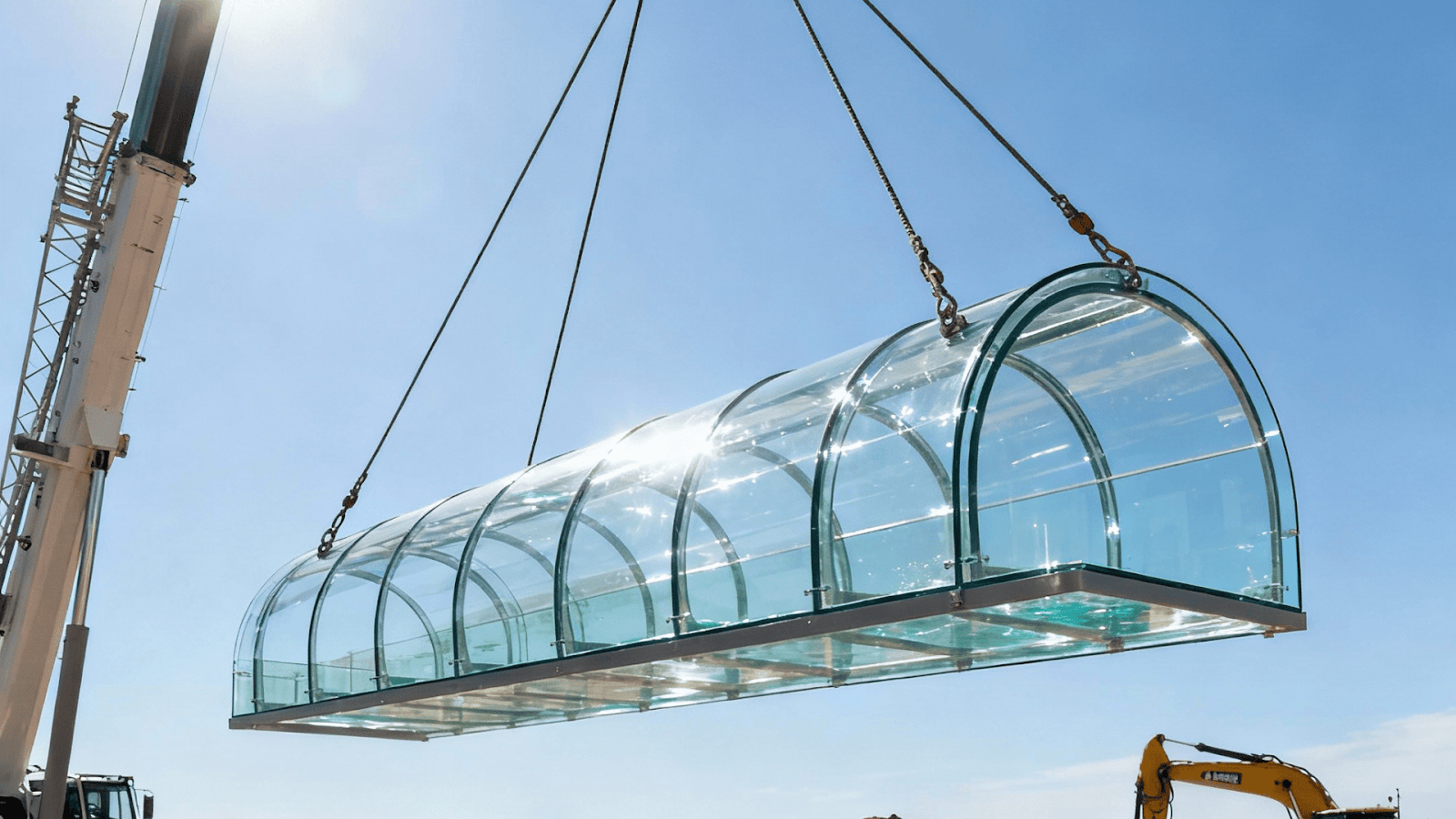How Are Massive Acrylic Aquarium Windows Made – Step-by-Step [2025]


If you’ve ever stood in front of the 8.3-meter-wide acrylic panel at Okinawa Churaumi Aquarium or walked through the 48-meter underwater tunnel at Dubai Mall Aquarium, you’ve experienced one of the greatest engineering illusions of our time:
A 60-ton barrier holding back millions of liters of water, and yet, it feels invisible.
That illusion isn’t just transparency. It’s precision. I’ve spent over two decades designing, fabricating, and installing acrylic aquarium windows for zoos, luxury villas, hotel lobbies, and underwater restaurant swimways, and let me tell you…
Building a massive acrylic aquarium window is more like constructing an aircraft wing than installing a glass pane.
From chemical bonding that must be bubble-free to refraction-matched adhesives, from 100-ton panel lifting logistics to expansion control… every stage demands perfection.
Today, I decided to share my knowledge and experience about how large acrylic aquarium windows are made, step by step. You see how different it is compared to creating regular aquariums.
Let’s begin.
TL;DR — Quick Takeaways

- Acrylic is used instead of glass because it’s 17x stronger, half the weight, and can be bonded into seamless, giant windows without frames.
- Most large aquarium panels are not a single piece. They are laminated from 10–20 acrylic sheets using optically matched adhesive so invisible that joints disappear.
- The biggest challenge isn’t manufacturing. It’s bubble-free bonding, precise polishing, and transporting multi-ton panels without stress fractures.
- Acrylic windows expand up to 5mm per meter under heat, so engineered framing systems must account for thermal expansion.
- Cost per panel ranges from $900 to $3,000 per square meter, depending on thickness, curvature, and installation complexity.
- If you are planning a massive aquarium window, then make sure to consult with people with proven track records (such as Hammerhead Aquatics).
Now let’s get into the details.
Complications in Creating Large Acrylic Aquarium Windows

Even with advanced machinery, one tiny mistake ruins a panel worth hundreds of thousands of dollars.
1. Optical Distortion from Poor Bonding
If two acrylic sheets are glued with adhesive that doesn’t match their refractive index, the panel turns foggy or white under water pressure. We use adhesives specifically engineered to refract light exactly like the acrylic itself, making the seam invisible, like in Chimelong Ocean Kingdom’s 39-foot shark tank window.
2. Bubble Formation During Lamination
Even microscopic air pockets turn into cracks under water pressure. Early builders tried silicone-based sealers, which failed. Today, we use vacuum bonding, elastic seal channels (originally improvised using udon noodles in Japan), and slow-cure adhesives that take up to 2 months to fully dry.
3. Thermal Expansion and Frame Stress
Unlike glass, acrylic expands when exposed to temperature changes. A 10-meter panel can expand by a full centimeter. If mounted rigidly, it cracks. That’s why every panel sits in a floating compression frame with rubber expansion gaskets.
4. Scratching and Long-Term Maintenance
Even after installation, clarity must be maintained for decades. We apply anti-scratch coatings, and for public aquariums, we polish underwater using diver-operated orbital machines.
How Massive Acrylic Aquarium Windows Are Made — Step by Step
So, let’s go over the steps used to create the huge acrylic windows.
Step 1: Sheet Casting or Extrusion

Raw acrylic (PMMA) is melted and poured into flat molds or extruded through calibrated dies, forming base sheets between 30–100 mm thick. For wall-sized panels, cast acrylic is preferred for higher optical quality and strength.
Step 2: Precision Cutting & Edge Preparation

Each sheet is laser- or CNC-cut to specification. The edges are machined perfectly smooth because even a microscopic unevenness can trap air during bonding.
Step 3: Multi-Layer Lamination (Bonding the Panels)

This is where most people misunderstand:
A 50 cm thick panel is almost never one solid piece. It's multiple 5 cm sheets chemically fused into one monolithic optic block.
We apply optically clear acrylic adhesive with the exact same refractive index as the sheets. The layers are clamped under controlled pressure, using elastic sealers to prevent glue leakage.
This adhesive takes 6–8 weeks to cure, and only then can polishing begin.
Step 4: Trimming & Edge Routing

Once fully bonded, the panel is machined to its final dimensions, including thickness correction, gasket grooves, and mounting rebates.
Step 5: Flame Polishing / Orbital Buffing
To restore perfect clarity, we use industrial flame treatment or multi-stage diamond buffing until you can’t see where one sheet ends and another begins.
Step 6: Transportation & Craning

Panels can weigh 10–80 tons. We plan transport routes like military logistics. I’ve personally had to remove highway lamp posts to move an acrylic tunnel section through Asia.
Step 7: Mounting into Frame
Finally, panels are seated into compression frames lined with neoprene or EPDM rubber, allowing controlled flexing under pressure.
For deep tanks, pressure can exceed 200 kPa, so the frame must never directly pinch the acrylic — or stress fracturing begins.
Cost of Building Large Acrylic Aquarium Windows (2025 Estimates)
- 50 mm thick panel
- Suitable for: up to 1.5 meters water depth
- Approximate cost: $700 – $900 per square meter
- Typical use case: Home aquariums, hotel lobby displays
- 100 mm thick panel
- Suitable for: up to 4 meters water depth
- Approximate cost: $1,200 – $1,600 per square meter
- Typical use case: Private villa pools with viewing windows
- 200 mm thick panel
- Suitable for: up to 8 meters water depth
- Approximate cost: $1,800 – $2,500 per square meter
- Typical use case: Restaurant tanks, large feature walls
- 300 mm thick panel
- Suitable for: up to 10 meters water depth
- Approximate cost: $2,500 – $3,500 per square meter
- Typical use case: Public aquariums, shark tanks
- Installation and transport
- Usually adds 30–50% on top of the above, especially for overseas craning or curved panels
Final Thoughts

Whether it’s a luxury hotel suite viewing into a reef lagoon or a world-record public aquarium, the secret to a great acrylic window is this:
If people are staring at the panel instead of the fish, we’ve failed.
A great aquarium window should disappear, leaving nothing but water, movement, and emotion.
Expert Aquarium Window Design & Installation
If you're planning an underwater restaurant wall, resort lagoon window, or even a private villa showcase tank ; don’t treat acrylic like glass.
I’ve helped architects, engineers, and private clients specify, fabricate, and install stress-free acrylic glazing systems for over 30 years. So if you need help, you can contact my team.
And if you have any questions about what you learned so far, just leave a comment.
FAQs
1. How long do acrylic aquarium windows last?
If properly bonded and maintained, 50+ years is realistic. Most failures are from improper mounting or chemical cleaning misuse, not material degradation.
2. Can acrylic windows be installed underwater in pools or infinity edges?
Yes — hydrophobic anti-fog coatings and UV-stabilized acrylic make it ideal for wet-side viewing portals in pools, spas, and submerged lounges.
3. Does acrylic yellow over time?
Only cheap, non-UV-stabilized panels do. Marine-grade cast acrylic is UV-resistant and stays crystal clear even after decades in sunlight.
4. Can scratches be removed after installation?
Yes. Unlike glass, acrylic can be repolished indefinitely — even underwater using diver-operated micro-abrasion systems.
5. Can I build a DIY acrylic window aquarium at home?
For panels under 1.5 meters, yes — but never use silicone to glue panels together. Always use cast acrylic with solvent bonding or professional-grade adhesives.
For anyone planning to build acrylic aquarium windows—especially on a large scale—choosing an expert team for design, bonding, installation, and long-term maintenance is essential. Do not treat acrylic like glass; every phase from sheet casting to mounting demands specialized knowledge and precision. Work with seasoned professionals like Hammerhead Aquatics, who have a proven record with large aquarium windows, to ensure structural integrity, perfect clarity, and longevity. Consult before designing your project and rely on expert advice for a flawless, lasting investment that transforms your space with a true underwater spectacle.











